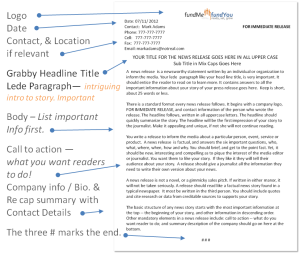Writing a press release means following a very specific format. It's not any harder than figuring out a submission format. There are a lot of examples on the web, but it's a map, really, with five or six really specific parts. Here is a good example. It boils down to making your press release sound intelligible, but not jargony. It's not a tweet. It's not a status update. It's not an email. It's a 400-word newspaper article slash essay about what happened and why the reader should care and how to engage, if interested. Maybe no more than four to five hyperlinks, with an image is good. With a video link is better. Spell out any link URL, in case the link is disabled in some downstream venue.
And don't try to make it "SEO" that will just get it hidden from search engines, if it looks too obvious. There are a zillion articles about the decline of SEO techniques so you can read up on that separately.
How to pick a Press Release service?
As for picking which company you want distributing the document, perhaps you can inform yourself about how press releases are found. Try to "search" for something yourself and figure out which press release leads you to what you want.
Pick your favorite publisher and try a phrase like "is proud to announce" with it. Once you begin finding actual press releases (not just bloggers or interviewers or pundits who read the release and are paraphrasing now), you can watch for patterns in the source name attribution as you search. The name below the title should be a clue -- prweb, sbwire, emailwire, etc.
What's the lesson here beyond "who does press releases about stuff I like?" It's this: you can pay a fortune for a press release only to have it circulated through other PR services that just rebrand it. More about wholesaling in just a minute. Let's first talk about where press releases get sent.
What is the "value add" of a press release service?
A press release at a minimum has to take your blurb and make it discoverable on the web. The "value add" for a press release service is supposed to be, "look who we send the press release service e-mail announcements to" ... That is the real value. But watch out, even then:
- 40,000 emails equals 4,000 reads,
- 4,000 reads equals 40 clicks,
- 40 clicks equals 4 "follow through"
What do you expect to happen?
For you and your book - the punchline phrase above was "follow through"... But follow through to what? When someone reads your press release, what exactly do you want to happen? What is your engagement platform? A buy-click? A book home page at your publisher? How is your press release going to be any different than standing on a street corner holding out your book to maybe 50 different people saying, "$10!!" You're just as likely to get maced, as to get a sale.
Make sure the call to action section of your press release is really specific.
What's wholesale got to do with it?
Something else that should make you cautious: Let's say you can order a press release service for, say, $69 ... Did you you pass up a deal to get unlimited press releases for just $299/yr subscription? That is a sign that the service is used wholesale by other folks for bulk distribution. Oddly, the one company that is offering subscriptions is probably the company you want--even if you don't take the subscription. Rather than the smaller service that will just come here anyway.
Let's be specific: Press Release Monkey might charge you $129 once, for you to write your own single press release. Maybe they get fifty people to do that every month. Their income: $6500/month. They order re-distribution to three other wholesalers like PRBuzz.com ($300/yr), SBWire.com ($840/yr) and maybe go nuts and get Emailwire.com ($6,000/yr). All those subscriptions allow them to submit unlimited press releases. They have near the income in just one month to pay for their wholesale subscription expenses for a year. Put another way, they only need 50 or 60 customers a year to cover their bulk subscription expense, for as many press releases as they want . Yes they have other expenses and value add. But that seems lucrative...
How to follow up
To begin with, put a unique phrase in your release that doesn't occur anywhere else, including your own work or the web or any other promotional material you manage. Let's say, you pick the phrase "unsurpassed gusto and vigor" ... Use that to search later (with the quotes, to get exact matches) to find how far the phrase (and therefore the press release) went into the searchable Internet. Maybe you have a reach of 500 sites. Not bad. Now test how far beyond your press release the news went, say into blogs, discussions, etc. So, search again, but exclude your wholesaler from the results using dashes. Like this: "unsurpassed gusto and vigor" -emailwire -sbwire -prbuzz .... You might be down to less than a dozen sites.
Are they good sites? A good reach? One can only hope.
Could you have just contacted them yourself? Ha-ha. There is no substitute for direct marketing~!
TL;DR
The five tips are:
- It's ok to let someone else write it, but you can learn to do it
- SEO makes no difference
- Get to know a few press releases first and how they are discovered
- Choose the company carefully
- Understand the company's value add
- Be clear on what you want to happen
- Design the text so you can follow up

No comments:
Post a Comment